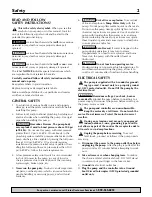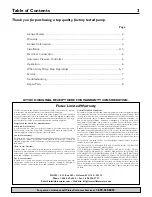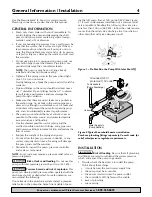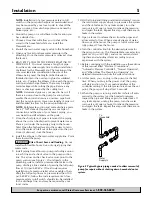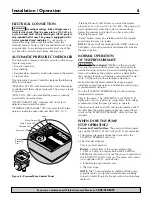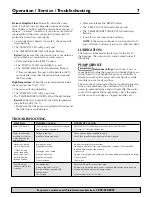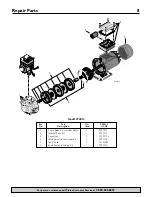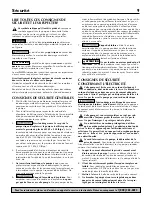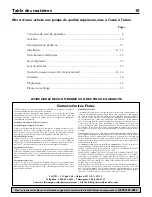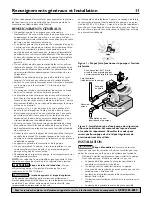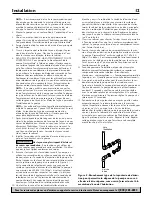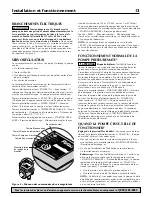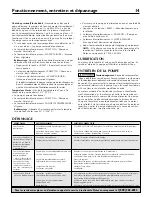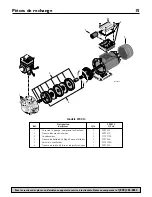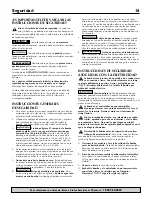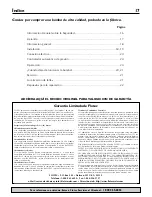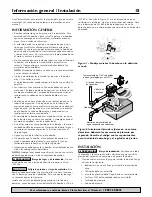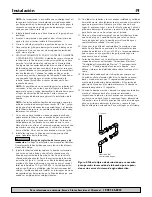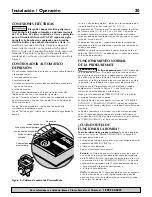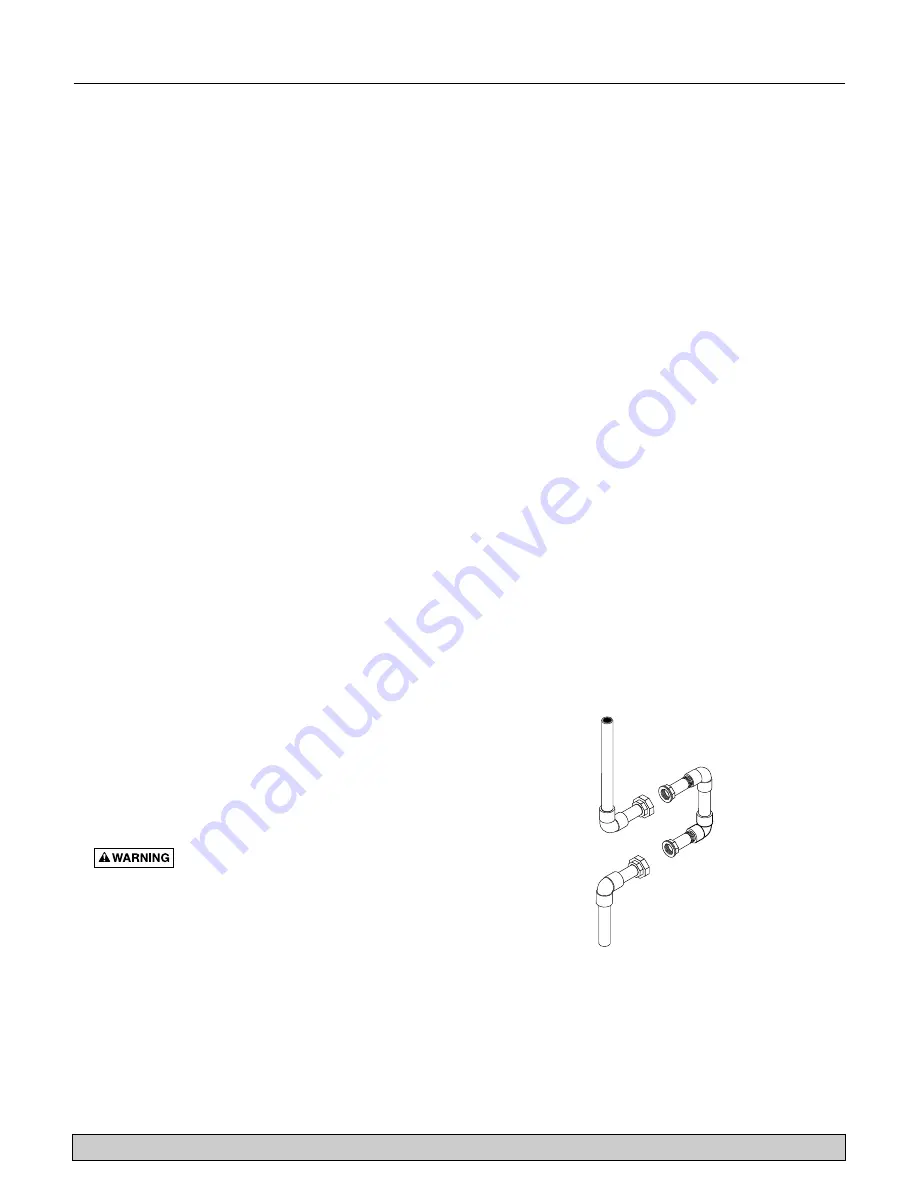
Installation
5
For parts or assistance, call Flotec Customer Service at
1-800-365-6832
NOTE:
Installation of a low pressure safety cutoff
switch on the pump discharge is recommended (and
may be required by your local code) to shut off the
power in case of low discharge pressure (caused by
broken pipe, etc.).
2. Mount the pump on a solid base in the location you
have decided on.
3. Choose a time that will allow you to shut off the
water to the household while you install the
PressureMate.
4. Shutoff the main water supply valve to the household.
5. Open any faucet to relieve water pressure in the
plumbing. Once the water pressure is relieved, close
the faucet.
6. READ STEP 6 COMPLETELY BEFORE STARTING TO
WORK ON IT. You must remove a length of pipe
from the main water supply line to allow installation
of elbows for the PressureMate. The locations of the
cuts must take into consideration the size of the
elbows being used, the length of the threads in
threaded joints or the overlap in glued or soldered
joints, etc.. Position the elbows in line with the pump
suction and discharge threads. There may be slight
water leakage while cutting the pipe. Remove any
burrs or shavings caused by the cutting tool.
NOTE:
Galvanized pipe may not need to be cut. If
there is a union close to the pump location, disas-
semble the union and remove (unscrew) pipe back
past the pump location. Have new lengths of pipe cut
and threaded to allow for the pump installation.
NOTE:
Both female suction and male discharge ports
have 1” NPT threads. Depending on your type of
connection and the size of your home’s piping, you
may need to install adapters on the ports.
7. Once the short piece of pipe is removed, the piping
above the cut can be drained to prevent water mess.
Place a pail under the opening going to the house-
hold. Open the highest faucet in the system to let in
air so the water can fall out of the pipes into the pail.
Once it’s drained, close the faucet.
8. Install the elbows in the main water supply line. Point
them toward the pump.
Risk of burst hose and flooding.
Do not
install with flexible hoses. Use only rigid piping that
meets code.
9. Install piping from elbows to pump including a union
in each line and a check valve in the pump suction
line. The arrow on the check valve must point to the
pump suction (see Figure 2). If not already in the
plumbing system, install a pressure relief valve in the
pump discharge line capable of passing the full pump
flow at 100 psi (689 kPa). If local code requires
installation of a pressure relief valve capable of han-
dling the full pump flow at a pressure less than 100
psi (689 kPa), follow the code requirements. A low
pressure safety cutoff switch should also be installed
in the discharge line, and may be required by your
local codes.
10. With all pipe and fittings installed and sealed, turn on
the main water supply slowly to pressurize the system
and check for leaks. If any leaks appear, turn the
main valve off, open a faucet to relieve the pressure,
and repair the leak. Repeat this step until there are no
leaks in the system.
11. Open a faucet to release the air from the pipes and
allow water to flow. When a steady stream of water
flows out of the faucet, the pump is full of water and
fully primed. Close the faucet.
12. Turn the controller knob to the desired pressure for
the pump to turn on. The PressureMate comes factory
preset at 30 psi (207 kPa), and we recommend start-
ing there and adjusting it later according to your
experience with the system.
13. Before continuing with the installation, see the sections
of this manual titled “Electrical Connections”,
“Automatic Pressure Controller”, “Normal Operation”,
and “When Does The Pump Stop Operating” for
detailed information on how the system functions.
14. At this point, you can plug in the pump for the first
time. When you plug in the power cord, the pump
will start and run for 15 seconds regardless of the
controller setting. If the inlet pressure is above the set
point, the pump will stop after 15 seconds.
15. When the pump is running and after it shuts off auto-
matically, the system is at the boosted pressures.
Inspect the pipe and fittings again for water leaks. If
any leaks appear, unplug the pump, turn the water
main valve off, open a faucet to relieve the pressure
and repair the leak. Repeat this step until there are no
leaks in the system.
Water
Supply In
To
Household
Figure 3:Typical bypass piping needed to allow removal of
pump for repair without shutting down household water
system.


